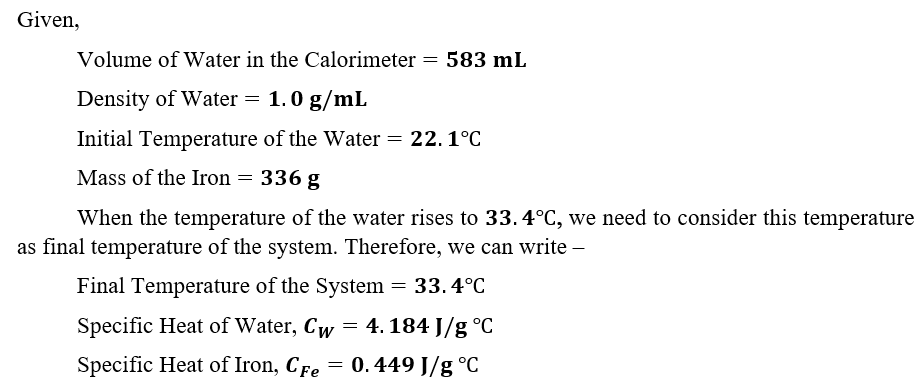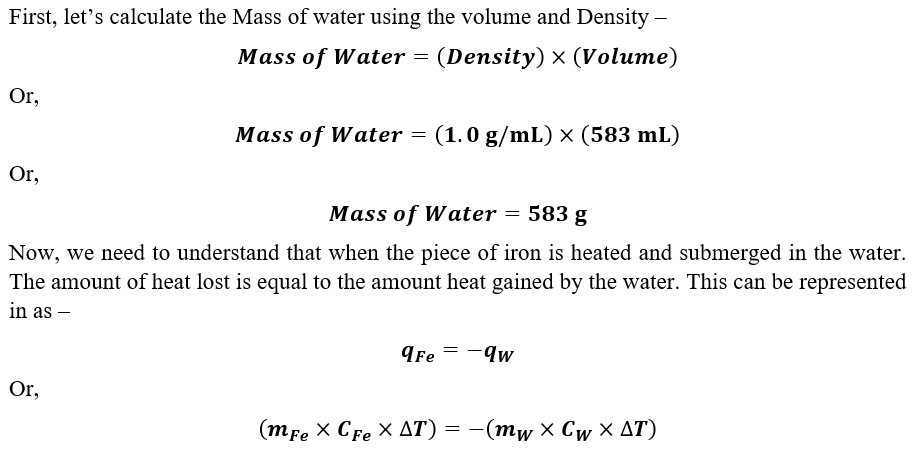A calorimeter contains 583 mL of water at 22.1°c. A 336 g piece of iron is heated in a Bunsen burner flame, then quickly submerged in the water in the calorimeter. After adding the hot iron, the temperature of the water in the calorimeter rises to a
Thermochemistry
Thermochemistry can be considered as a branch of thermodynamics that deals with the connections between warmth, work, and various types of energy, formed because of different synthetic and actual cycles. Thermochemistry describes the energy changes that occur as a result of reactions or chemical changes in a substance.
Exergonic Reaction
The term exergonic is derived from the Greek word in which ‘ergon’ means work and exergonic means ‘work outside’. Exergonic reactions releases work energy. Exergonic reactions are different from exothermic reactions, the one that releases only heat energy during the course of the reaction. So, exothermic reaction is one type of exergonic reaction. Exergonic reaction releases work energy in different forms like heat, light or sound. For example, a glow stick releases light making that an exergonic reaction and not an exothermic reaction since no heat is released. Even endothermic reactions at very high temperature are exergonic.

![**Transcribed Educational Content**
---
maximum of 33.4 °C. Determine the temperature (in °C) to which the piece of iron was heated.
Use the following values for your calculations.
- Specific heat of water: 4.184 J/g°C
- Density of water: 1.0 g/mL
- Specific heat of iron: 0.449 J/g°C
[Input Box] °C
---
**Explanation of the Diagram**
The image contains text related to a thermodynamics problem, where you are asked to determine the temperature to which a piece of iron was heated. The problem provides specific values necessary for calculations including specific heats and density. An input box is present for entering the calculated temperature in degrees Celsius.](/v2/_next/image?url=https%3A%2F%2Fcontent.bartleby.com%2Fqna-images%2Fquestion%2Fb3cca2f6-99a8-4436-ac34-ddd5c6eac033%2Fd5617056-b9a8-42af-9d42-3262b55cf945%2Fm4ark8b_processed.png&w=3840&q=75)


Step by step
Solved in 3 steps with 3 images









